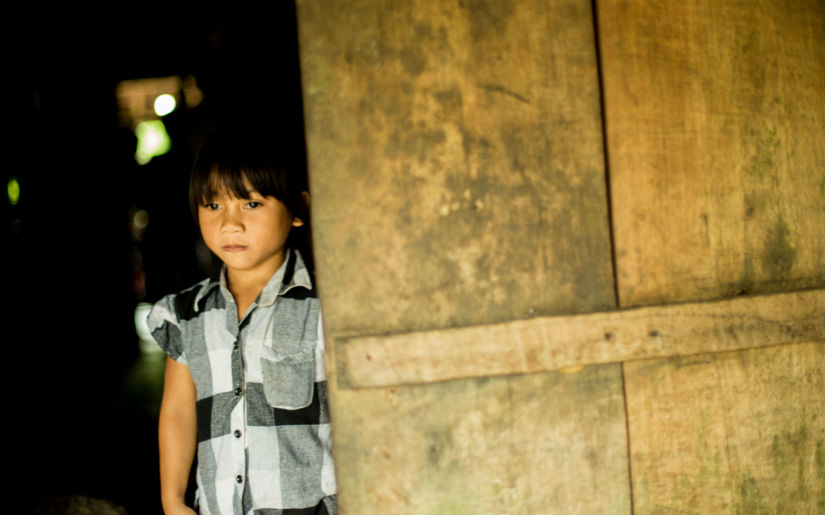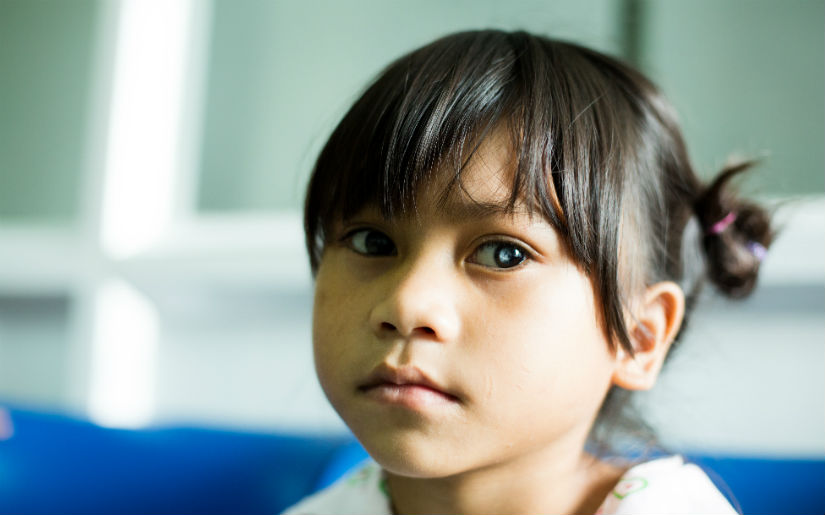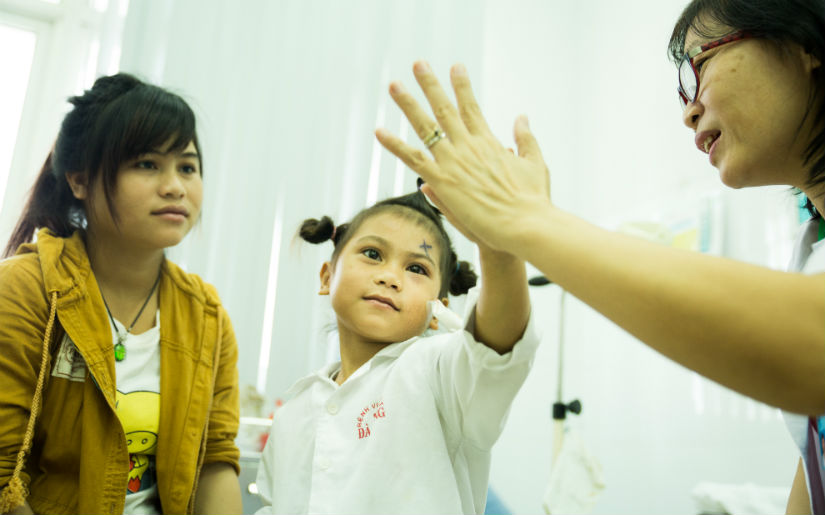Trut is shy, withdrawn, and completely attached to her young mother, Thuyen. As she sits on the balcony watching her mother grind rice, she hears a group of girls her age playing elastics. She gets up and uses her hands to guide herself around the house, closer to the sound of laughter. She squints as the harsh sun hits her cataract and causes intense pain in her left eye. It is a heartbreaking moment to see Trut trying to look down at the childhood she is unable to enjoy.
Seven-year-old Trut is blind in one eye. She lives in a stilted wooden house with her mum, baby sister and protective grandparents Bea 55 and Lay 62. The family belong to the H’re ethnic minority who number just over 100,000 and live in the central highland region of Vietnam, one of the poorest areas of the country. Until a few years ago, a small wooden ladder bridge was all that connected their village to the main road.
Although they understand some Vietnamese, the family still speak their own language and have strong traditional beliefs. This linguistic and cultural difference as well as geographic isolation and poverty have made it nearly impossible for Thuyen to access the sight restoring cataract surgery her daughter needs.

Thuyen is just 22 and her young sweet face could be that of Trut’s sister. Although in the moments she looks down at her daughter in despair, it is clear that she carries the burden of worry that so many mothers of blind children face.
Thuyen first noticed that there was something wrong with Trut’s vision when she saw a white circle form in her left eye about four years ago. “Trut can’t see the blackboard, she stumbles and falls a lot when she walks, she cannot run around and play with her friends and they tease her because she is blind,” Thuyen said. “She comes back from school saying that she’s upset because her friends don’t want to play with her. It makes me feel very sad”.
Three years ago, Trut’s father left the family in search of work and never returned. The family work as farm labourers and earn less than HKD$12 a day. The income is barely enough to support the family of five, let alone pay for Trut’s surgery.
Thuyen sometimes has to leave Trut and her baby sister alone in the house while she goes to collect firewood and vegetables so they can eat. Thuyen’s eyes fill with tears as she describes the fear she feels leaving the children alone.
“I’m very worried. I worry that I will not be able to support my family; I worry about my daughter’s eye; I worry that I will never have enough money to get her eye fixed. Now we can still work but we are worried about what will happen when we get older,” Thuyen said. The whole family is affected by Trut’s situation.,Eeverybody feels sad and helpless.

One day, a health worker visited the village and told Thuyen about a free outreach screening camp supported by The Fred Hollows Foundation. Thuyen said she was determined to take Trut to the camp where she was told that The Foundation could support her surgery at Da Nang Eye Hospital, an eight-hour, 300km drive away.
It was a straightforward and simple operation, an just 24 hours later, the doctor removed Trut’s patches. Soon, a shy smile appeared on Trut’s face as she looked up at her relieved mother. Dr Ngoc asked her if she could see her fingers and Trut boldly high fived her hand. It was a moment of pure joy.
Thuyen was overwhelming happy. She knew that Trut could now go to school, “I just want my daughter to do well at school, learn to read, and to be able to play with her friends.” All that a girl is supposed to enjoy in her childhood. Thuyen also wanted to take up more work as a farm labourer and earn money to support her family.
As Thuyen hugged her daughter and leaned in to give her a kiss, Trut cheekily pushed her away - a sign of the times to come with her newfound independence.
